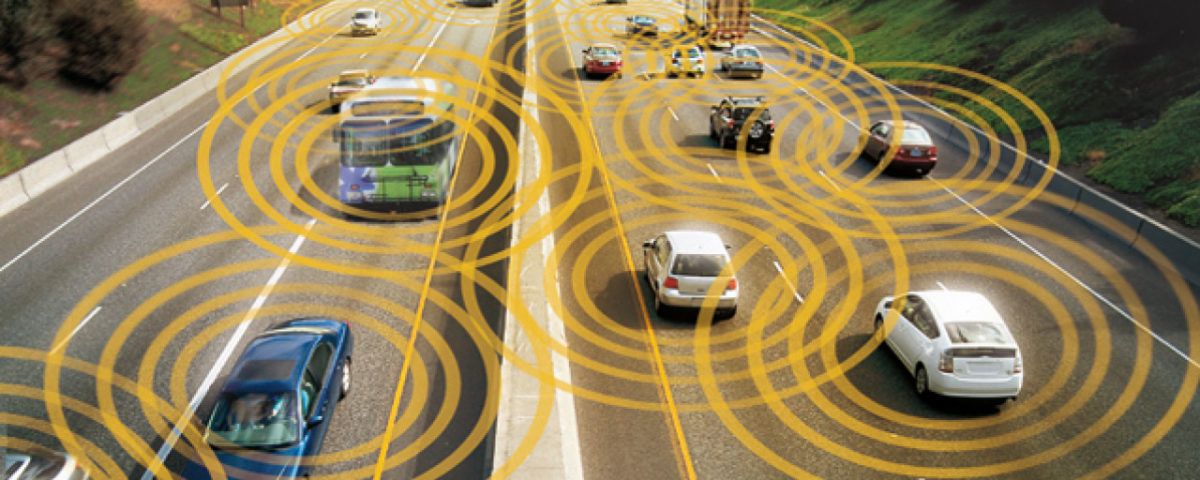No ratings yet. Focused on the future, cities are going to experience multiple problems regarding population growth. In 2050, 55% of the world population is expected to live in cities around the world. Because of the increasing population, the number of vehicles on the road increases as well which causes already problems in big cities. For example, the number of vehicles on the road is causing longer travel times, parking problems, traffic jams and environmental impact like air pollution and smog. In this article, upcoming technologies in the car industry will be discussed that have the possibility to drastically change the urban transportation.
First, the technology of smart cars will connect cars with each other like a network of Internet of Things which makes machine-to-machine communication possible. When the cars can communicate with each other, smart cars will be able to eliminate human errors, monitor traffic flows and speed to eliminate bottlenecks. With the use of the technology, the number of traffic jams will be drastically reduced which lead to a reduction of air pollution and travel time.
Second, car-sharing is an already existing model that connects supply and demand between drivers and travellers. Platforms like Uber and Lyft connect the drivers and travellers using mobile applications. Their models have the possibility to increase the number of people in the car and reducing the number of cars on the road. However, these platform models have not enough user’s to significantly improve urban transportation yet. Another example of car-sharing is Car2go which users allows to rent a vehicle on flexible car-sharing stands spread in the city, use it, and leave it at another stand. This business model has proved to already have a positive effect on the gas emission and miles driven in the cities.
Another technology which is currently in development is the self-driving car. Self-driving cars can sense its environment and navigate itself using a GPS unit and inertial navigation system. Multiple companies are currently developing self-driving cars and testing the safety of the system. Google, Tesla and Nissan expect that self-driving cars hit the road within 3-5 years. Using the existing business model of car-sharing, self-driving cars can disrupt the whole urban transportation and solve all the problems named above.
The implementation of the machine-to-machine communication and self-driving cars in the car-sharing business model has the possibility to eliminate public transport and car ownership from the society. An idea that arises from combining the technologies is for example a shared autonomous fleet of cares which can be ordered by everyone using one simple application on the mobile phone. Why would you use the public transport when ordering a car is only one click away? The car will appear in front of your home, drop you of at your destination and disappears. Public transportation will become less comfortable, slower and more complicated compared to ordering a self-driving car. Moreover, why should every home have its own car? In a sharing economy, transportation like self-driving cars could become a public good which will eliminate the parking problem and reduces the number of cars on the road.
This view for the urban transportation has multiple implications as well. For example, the adaptability of the people will be an important factor. Are people willing to give up control in the car and car ownership? Some people attach a lot of value to their cars and other people are just not willing to adapt. Next to that, the whole infrastructure of cities should be changed as well, old cars must be replaced with new cars and stored somewhere. Concluding, whenever this technology is available, it will take several years to fully implement the technology in a sharing economy as well.
In my opinion, the only way to reach this future is by cooperation. Companies must cooperate with each other in the transportation industry if they want to transform the way of transportation. Only one company is probably not able to produce a fleet of self-driving cars to provide multiple cities of their demand of transportation. Next to that, a new system should be developed to monitor all the autonomous cars and an application to interact with consumers should be developed as well. Therefore, the current competition in the car industries and taxi services should change in a collaboration between parties.
McFarland, M. (2016, July 19). How car-sharing is already helping cities with their transit issues. Retrieved from http://money.cnn.com/2016/07/19/technology/car2go-car-sharing-study-cities/index.html
Rayej, S. (2014, June 3). How do self-driving cars work? Retrieved from http://robohub.org/how-do-self-driving-cars-work/
Rodrigue, J. P. (n.d.). Urban Transport Challenges. Retrieved from https://people.hofstra.edu/geotrans/eng/ch6en/conc6en/ch6c4en.html
Shared self-driving car. (n.d.). Retrieved from http://smartcity.deloitte.com/trends/shared-self-driving-cars/
Smart cars: Automation takes over the roads. (n.d.). Retrieved from https://www.equipmentworld.com/highways-2-0-smart-cars-automation-takes-over-the-roads/


